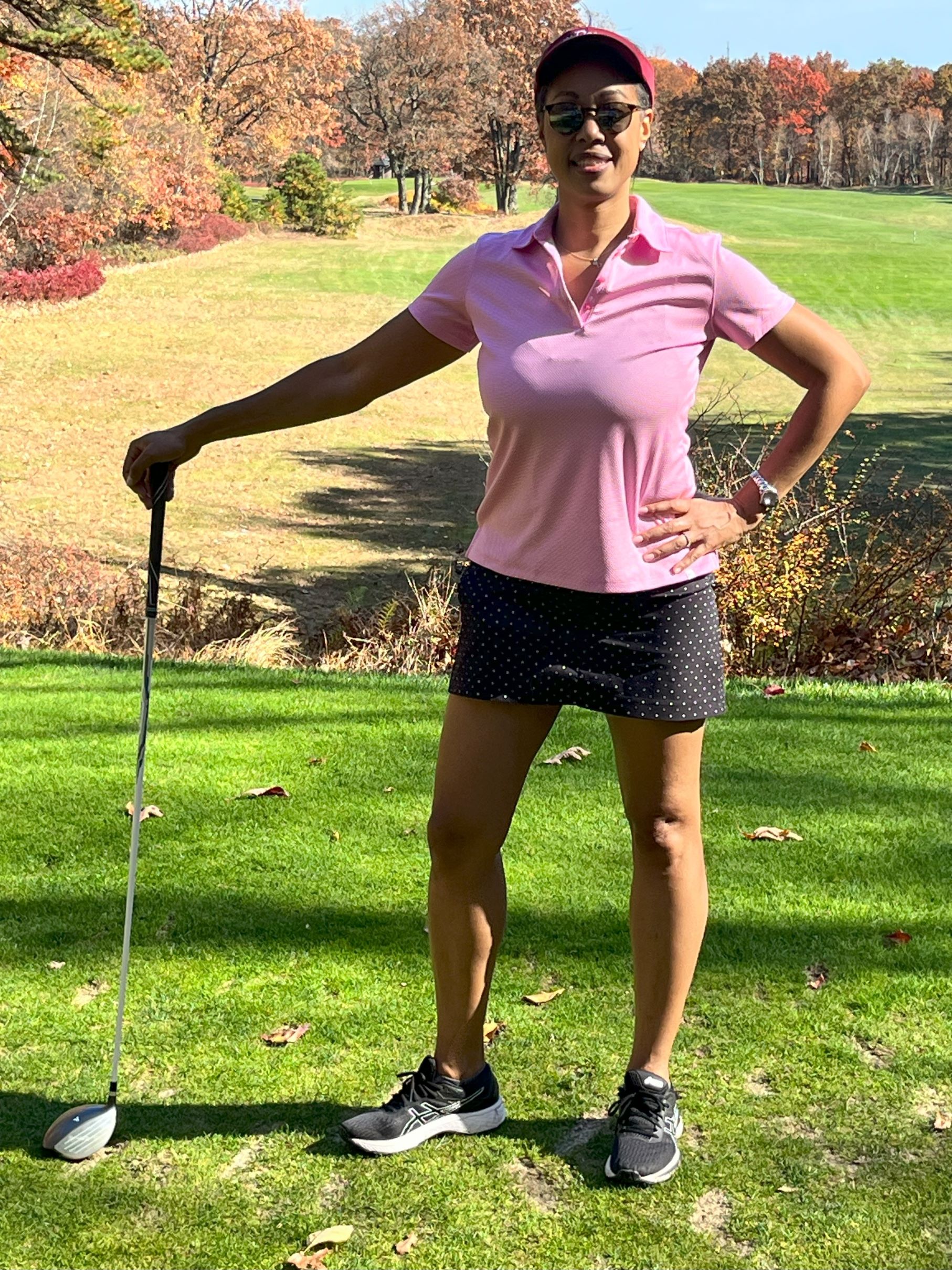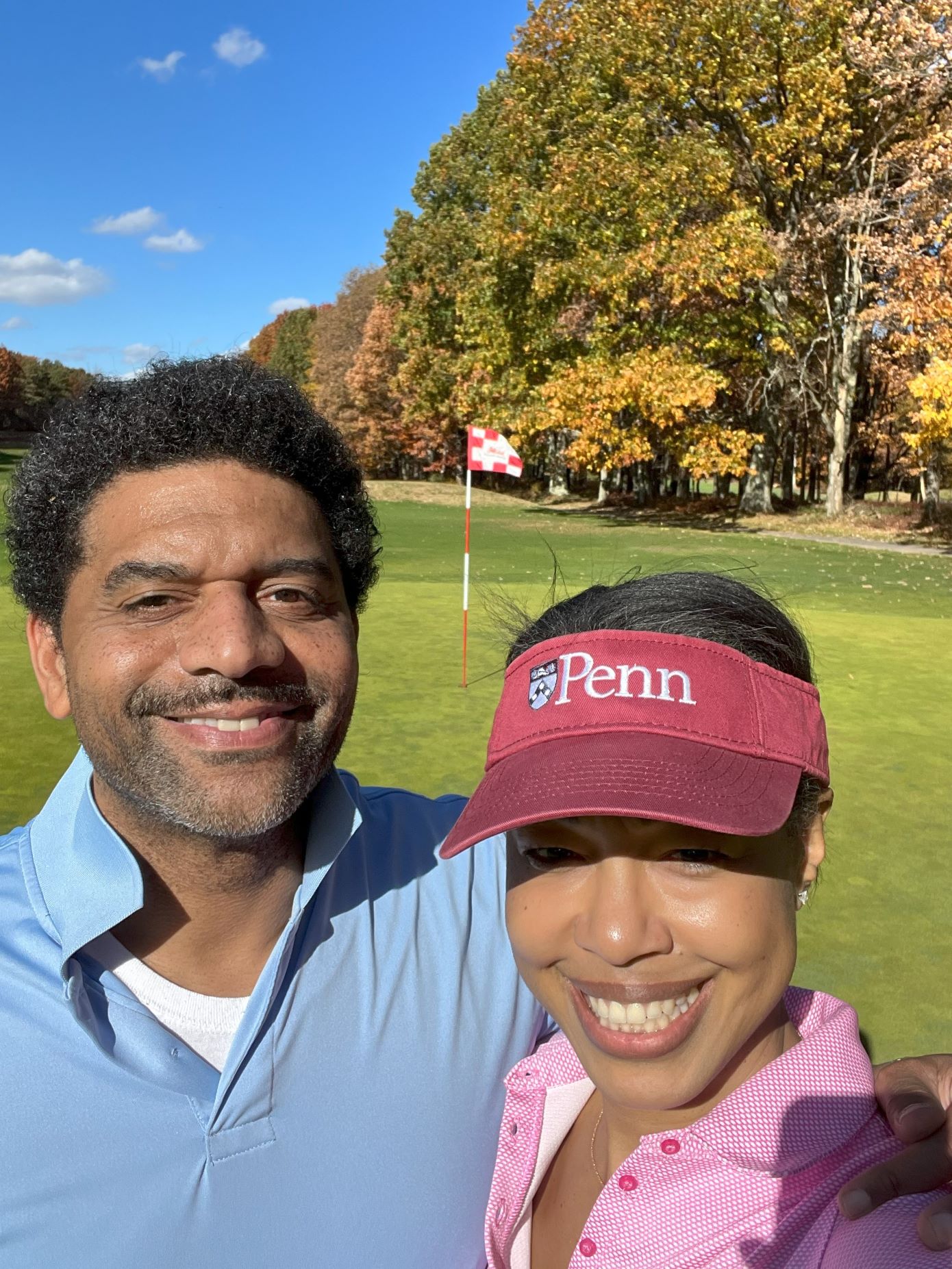Comments (0)
PLC Newsletter: Lessons from the Green
Playing golf is my joy. It’s a way for me to leave the challenges of work and life aside and spend quality time outside. I began spending time on the course 13 years ago, first riding alongside my spouse in the cart, watching him play the game he loves so dearly. I safely studied the spectacle from my seat, content to cling to my adult beverage.
Eventually, I dipped my toe in once the novelty of being a bystander wore off and my curiosity got the best of me. I loved the idea of engaging in a sport that was both an intellectual and physical challenge (despite what many folks think) that I could play safely as I age. I also reveled in the fact that as I began to play, I started identifying so many lessons I could apply to day to day life.
I have been meaning to document my insights on golf and life in a meaningful way for some time. As we approach year-end and set intentions for a new year, here are some things to keep in mind that I believe are applicable to the world of work. If you read golf news or watch professional golf, these thoughts may resonate with you. I hope they resonate even if you don’t!
Play your game. For each golf course, there is a standard total number of times to hit the ball from start to finish. This is called par. Your primary goal is to shoot a score at or below par. Many people do not successfully do so; however, the pursuit of that goal keeps people in the game. The personal quest is to beat the course, understanding that your greatest competitor is yourself. (Admittedly, I score my game but do not track my handicap. I said golf is my joy. I want to keep it that way. 😆)
The more you get out and play, the more you learn what works for you and what does not, what you need to practice and what you can roll with as it comes. It is an art and a science. The most important thing is that you learn how to play your best game. How you execute will look different than the person next to you.
And there is a difference between taking lessons and playing. My sister took lessons for months, then finally went to play a real round with me and my spouse. She was pissed when she didn’t play like Tiger Woods after 9 holes and wanted to go home. That’s not how this works.
Advance the ball with fidelity. Each time you get up to the tee box – the place where you begin each hole – you know where you need to get to – the flagstick. The flagstick is X hundred yards away from where you are currently standing. For each hole, there are usually three tee boxes to choose from based on your skill level. Pick your tee box, calculate the distance and hit the ball. Pretty straight forward since you know your goal, right?
Well, it’s not that simple. You have to factor in the weather, especially the wind, any visual impediments (can you even see the flagstick?) and your ability to hit the ball in the forward direction. (I stress this fact because I once hit a ball and it went sideways, hitting an animal bystander that yelped and ran away. I am not proud of it, but it happened.😞) I am not going to dwell on the fact that you’re supposed to do this in a certain number of strokes (hits or hacks at the ball) or less! (sigh)
I am setting all of this up to explain these key points. Before you hit the ball, you typically visualize and plan what you want to achieve. Every time you hit the ball, it lands somewhere that you intended for it to land OR it doesn’t. Regardless of where the ball lands, you must re-evaluate where you are and hit the next shot. That’s where you want to spend your time and energy at that moment – evaluating that next shot. The next shot is in front of you, not behind you. Yes, you must make adjustments in the moment that will help you move forward. And there will be time at the end of the golf round (ideally, after you make it through the 18th hole without quitting) to reflect on how you did overall and what you learned.

Know how to work your bag. There is a lot of equipment in golf and many different clubs within a golf bag to choose from. Based on your skillset, especially the distance you hit, it is prudent to know which clubs to use when. For years, I relied on input from my spouse, who used to teach a women’s clinic at a local golf center. I only began to confidently rely on my own club selection knowledge about one year ago.
While I understood the purpose of all of my equipment, I realized I was impeding my growth by constantly seeking his validation for my club selection or deferring the choice altogether. How was I going to improve my game if I couldn’t determine the tools I needed to be successful? What would happen if I wanted to play without him? As much as I loved to play before, I am even more excited to play now that I feel greater autonomy when I am on the course. I am more prepared in the moment to make choices that are going to benefit me in the short and long term.
Minor adjustments can have a major impact. Golf is a game of inches. Sometimes even less. The position of every element of your body – from your head down to your toes – before and during your swing will impact where the ball goes. Plus, every club is designed with a different degree of loft in the club head and where the club head hits the ball matters. Your club is essentially an extension of your arms. Add that all up and you will quickly understand how easy it is for a ball to go sideways, as I previously mentioned, because there are so many variables to consider even before we factor in environmental conditions.
Every incremental adjustment impacts how fast and how far you move forward towards your goal. At times, you make one adjustment and other times you may make multiple adjustments at once, each one building upon the other. It depends on the context. After each swing, you get immediate data and factor that microlearning into how you can approach the next shot.
Know when to let go. I would be shocked if you have never heard of the charged emotions that can flare up in an instant when playing a round of golf. Feelings of frustration, anger and disappointment are common. So why do so many people love to play? It is the belief that everything can align in a single moment when you hit that one unbelievably awesome shot. It is living in the possibility of that moment and knowing that if you build skill and have a growth mindset you will, over time, have more joyful moments than crappy ones.
Golf is a game of progress rather than perfection. It is known that negative feelings from the previous shot will seep into the crevices of your mind and bungle the next. So make the adjustment and, as Tay-Tay says, “Shake it off.” After a really bad shot, I am known to grunt and lift my club above my head in a rage. When it gets above my head, I stop and laugh at myself because I know I have no intention to slam my club into the ground. The ground did not harm me and I need not damage the course for those who follow behind me. As quickly as the frustration comes, it goes. I look forward to the laughter. Onward!
 Shamis and Tom Pitts
Shamis and Tom Pitts
Sometimes you choose your playing partners, sometimes you don’t. While you are playing your own game, you are often playing alongside others – usually up to 4 people. Unless a course is really slow, don’t count on playing by yourself. Many folks head to the course with a crew of family and friends to spend quality time. For those who don’t, you will often be paired with people you don’t know. You’ll learn pretty fast that everyone has their idiosyncrasies when they play. Some people like to (trash) talk, some don’t. Some people want to measure the distance of each shot, some wing it. Some people want to search for every lost ball for 10 minutes, some don’t. Some people are great golfers, some are good golfers and then there is everyone else. 🙂
What brings everyone together is the joy of the game. Groups have to negotiate the course together to get through the round. You operate as a team to search for the lost balls because you want to keep the pace of play lest the marshal put you on the slow play clock…or the group behind you stare you down or ask to play through because you are holding them up.
You give one another feedback – sometimes solicited, sometimes not – because everyone knows the intention is to improve. And if you don’t want the feedback, you get to figure out how to communicate that to the other person. (Don’t be like me and yell at your brother to stop stealing your joy! 🥹)
The best part is the collective celebration – cheers, high fives and shouts of “great shot,” “good ball,” or “nice putt” – when you achieve ONE successful act. It is all worth it.
Final Thoughts
I intentionally did not make the explicit tie back into how each of the aforementioned insights shows up in the workplace. I prefer to let you marinate on that and determine what resonated for you. How might you apply these insights into your day to day?
While you may not play golf, there may be another activity in which you engage where you have experienced similar insights. Someone I know recently said they feel this way about bowling. They are deeply immersed in bowling culture and shared some ins and outs of competitive bowling. Once they did, I immediately understood the parallels.
There are lessons all around us that we can draw from. I hope I opened up some possibilities for you today.




LEAVE A REPLY
Your email address will not be published. Required fields are marked *